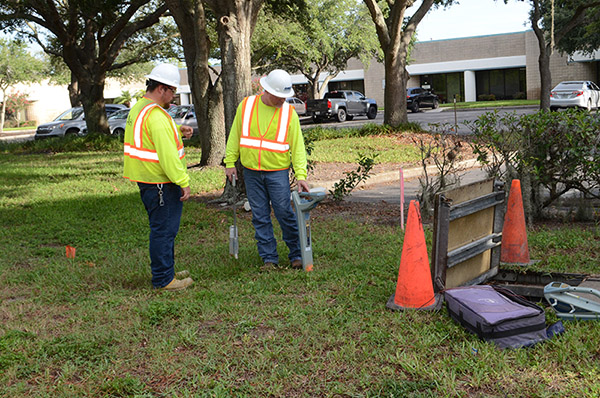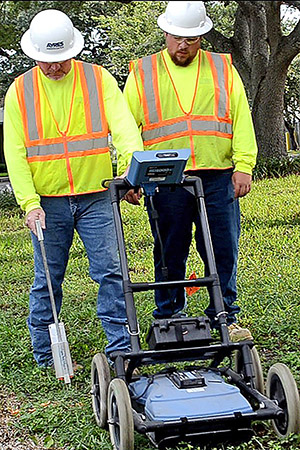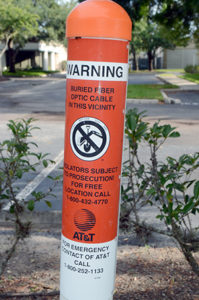Better SUE Than Sorry: Locating Utilities Safely

“JEA (Jacksonville Electric Authority) crews hit water main, gas line in same day.” – April 2016
“30-inch water main ruptures in Orlando.” – April 2016
“Natural gas leak closes SR 54 in Pasco County.” – June 2016
These recent news stories in Florida have one thing in common: construction crews accidentally striking utilities while excavating during construction. The fallout from just these few instances included significant road closures and traffic delays, home and business evacuations, construction delay claims, the need for emergency response units, and unnecessary rework.
Many agencies, including the Florida Department of Transportation, are pushing more and more for the use of subsurface utility engineering (SUE) on roadway and utility construction projects to avoid these problems.
 SUE blends utility designating, utility locating, surveying and mapping, and data management into a fluid method where “X” marks the spot for underground utilities – literally. The process involves using research, engineering, utility coordination, land surveying, and nondestructive construction skills. From a technical standpoint, of course, the process is much more involved and includes various methods delivering various levels of data quality.
SUE blends utility designating, utility locating, surveying and mapping, and data management into a fluid method where “X” marks the spot for underground utilities – literally. The process involves using research, engineering, utility coordination, land surveying, and nondestructive construction skills. From a technical standpoint, of course, the process is much more involved and includes various methods delivering various levels of data quality.
The methods involve using electromagnetic locating or ground-penetrating radar (GPR) to locate utilities. Electromagnetic locating can be used for metallic pipes and cabling. A transmitter induces a signal onto the utility, a receiver centers on the signal, and the utility’s horizontal location can be marked with water-based paint. GPR uses an antenna-mounted cart device to scan over utilities while radio waves detect metallic and nonmetallic utility infrastructure.
The next step involves vacuum excavation with a specialized truck using a nondestructive air and vacuum method to remove overlying soil to expose utilities and confirm their three-dimensional locations. These areas are marked and staked, confirmed using topographic survey and GPS, and placed on construction plans. This video shows one of our SUE crews in action.
 Contractors now know with certainty what types of utilities lie below, where utilities run, how far lines go, and how deep they are buried. That’s extremely valuable information. Damaging a water pipe, gas main, cable TV line, or other utility during construction proves costly and potentially dangerous.
Contractors now know with certainty what types of utilities lie below, where utilities run, how far lines go, and how deep they are buried. That’s extremely valuable information. Damaging a water pipe, gas main, cable TV line, or other utility during construction proves costly and potentially dangerous.
Contractors and utility companies also find out through SUE which utilities are in conflict with each other. Historical records (as-builts) don’t always accurately depict which utilities were installed and where, making it a game of chance (an expensive one) if due diligence isn’t used for utility investigations. Knowing potential conflicts beforehand can significantly speed up the relocation process and keep your project on schedule and within budget.
A Federal Highway Administration/Purdue University study concluded that using SUE on projects provided a return of $4.62 for every $1 invested, using a sample of 71 projects in four states. Today, with costs increasing dramatically and lawsuits on the rise, the return on investment likely is higher. Other studies have shown that waiting until the construction phase to solve utility conflicts can cost companies tens of thousands of dollars in claims and associated costs, when a SUE investigation for a fraction of the cost would’ve mitigated many of the issues.
Aside from money, SUE provides safety assurances (no fatalities) and useful data for better project planning and outcomes. And let’s be honest: Wouldn’t contractors (and their clients) rather avoid negative headlines, public scrutiny, additional costs and headaches, and potential legal actions that are inherent with utility hits and conflicts?
Click here for more information about Ayres Associates’ SUE services.

Post a comment: